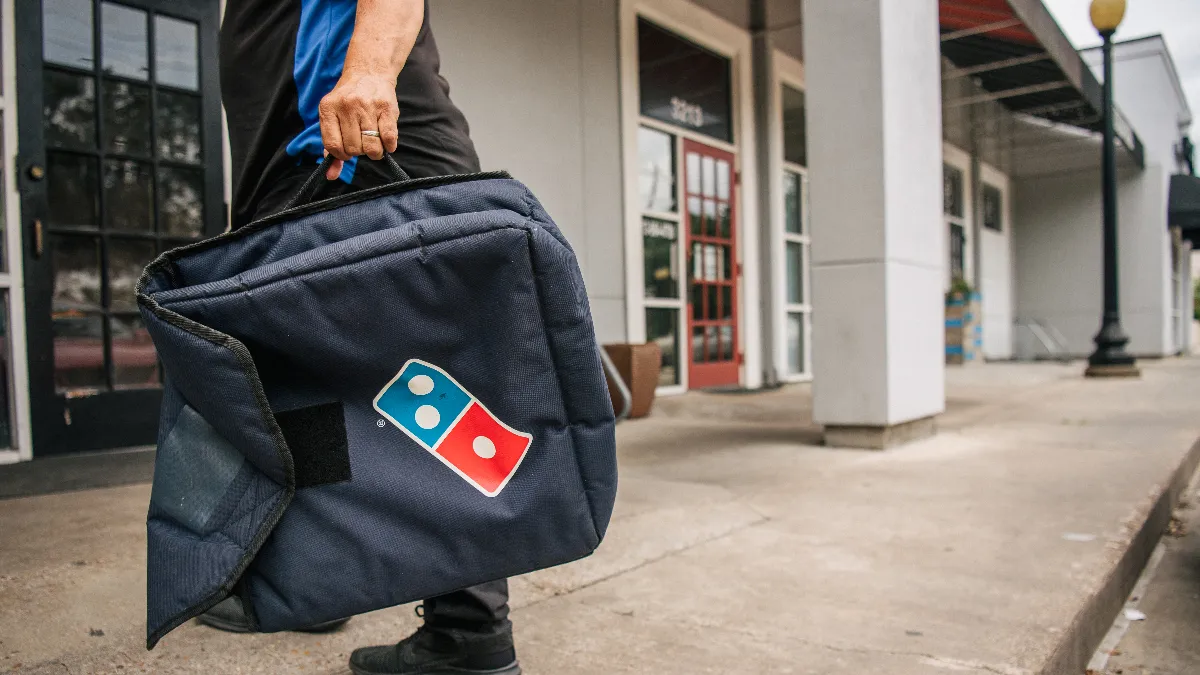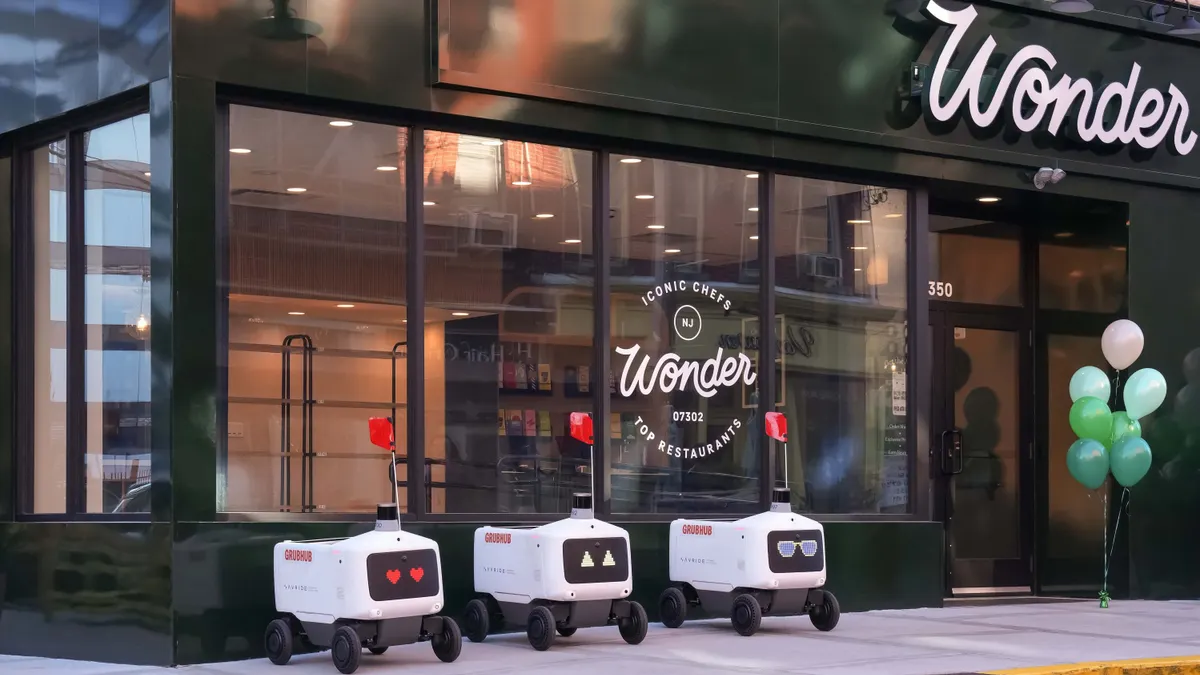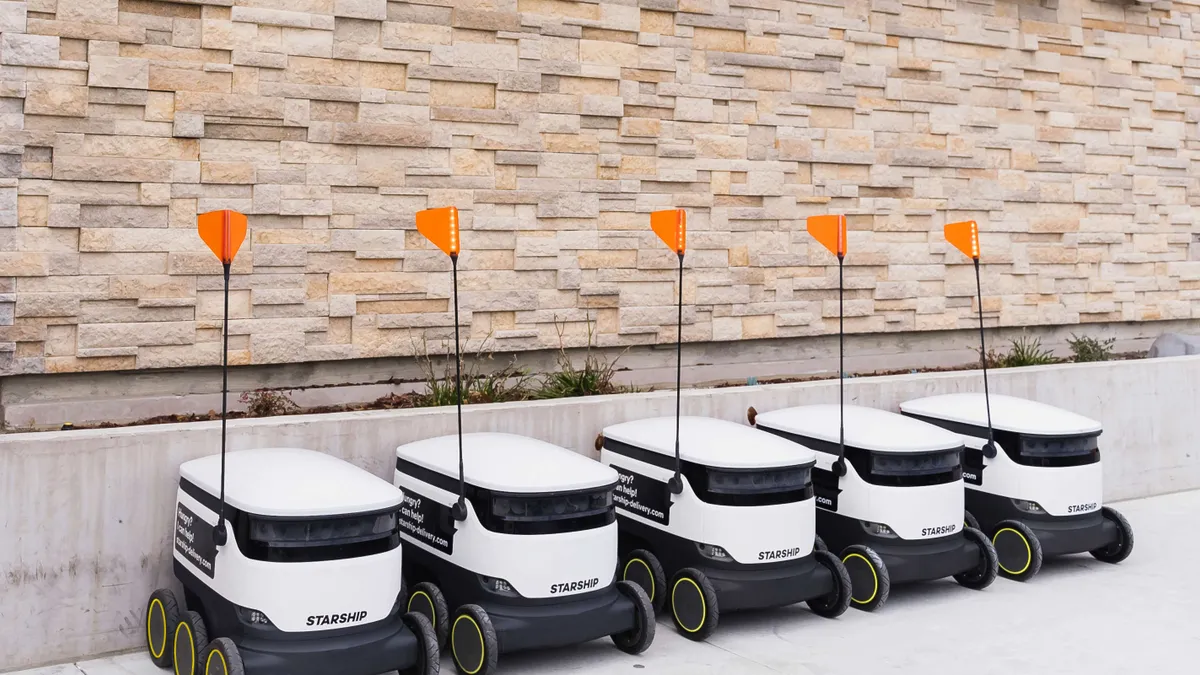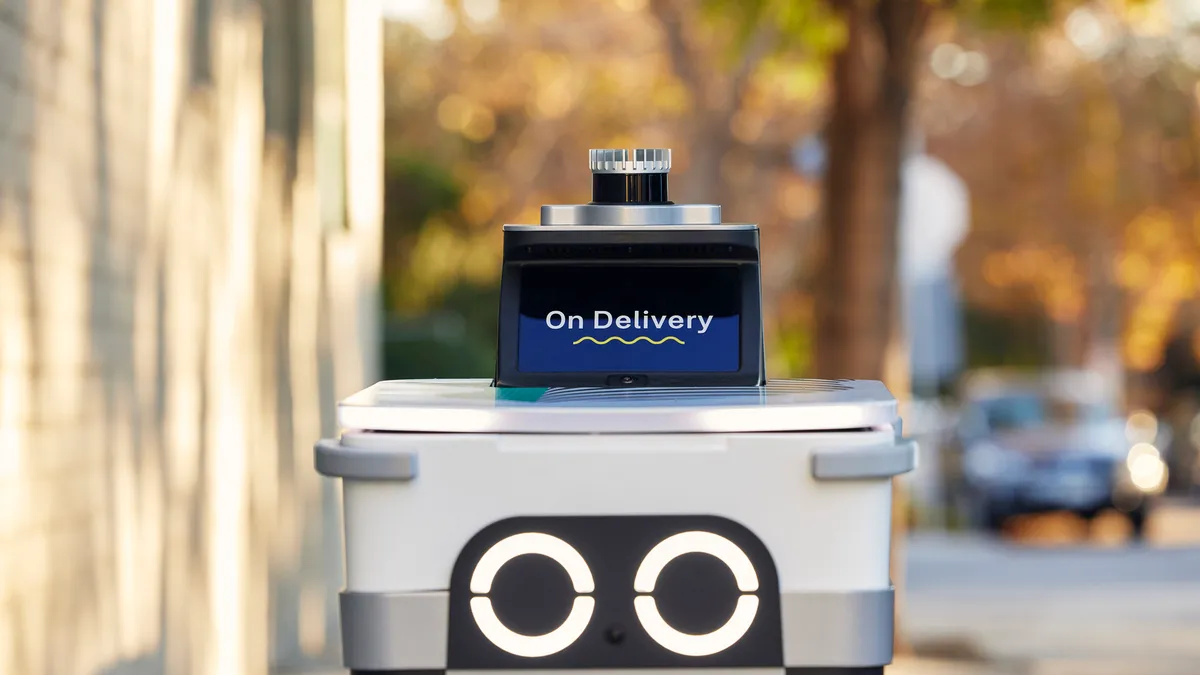2022 is shaping up to be a difficult year for Domino’s U.S. business. Same-store sales fell 3.6%, the sharpest drop in years, due to the impact of inflation and a shortage of delivery drivers.
This first quarter performance comes in stark contrast to the same-store sales boosts Domino’s reported during the early quarters of the pandemic, including a 17.5% spike during Q3 2020. Pizza delivery skyrocketed during the height of the COVID-19 crisis when people were stuck at home, but now it lags behind carryout.
Carryout same-store sales, however, are up 24% compared to Q1 2019, and up 11.3% compared to Q1 2021, Domino’s CEO Ritch Allison said on Thursday during the company’s earnings call. Online carryout orders drive higher tickets and “a lower cost to serve” than orders placed over the phone, he said. Carryout overall is also cheaper than delivery because delivery drivers aren’t needed.
The company’s $3 tip campaign, which offers $3 coupons to customers who pick up their online order to use in the following week, led to a 5 percentage point increase in online carryout business, Domino’s COO and U.S. president Russell Weiner said. Weiner will replace Allison as CEO in May.
Domino's U.S. same-store sales declines in Q1 2022
Delivery isn’t Domino’s only pain point — inflation and higher food basket costs are strangling margins and increasing costs. The pizza chain expects store food basket inflation to range from 10% to 12% compared to 2021 levels, Domino’s CFO Sandeep Reddy said.
“While none of us were satisfied with U.S. sales in Q1, I am confident in our ability to get back to the growth levels we and our franchisees expect. As indicated by our carryout performance and the strength of our business in stores that were less constrained by labor shortages, we believe the demand for Domino's remains strong,” Weiner said.
To combat cost and labor challenges, the company is rethinking pricing, adjusting its cost structure and boosting its capacity to serve customer demand and generate incremental sales growth, Reddy said.
“Once implemented, we expect the initiatives … to enable annual operating income margins to recover to pre-pandemic levels post-2022,” Reddy said.
Domino’s delivery slips
Same-store sales for the chain’s delivery channel declined 10.7% during the quarter compared to Q1 2021 due to order declines, partly offset by higher tickets, Allison said. Many stores struggled to meet customer demand for delivery, and stores had to reduce hours. These closures led to a cumulative total of six days out of operation, Reddy said.
The gap between the company’s top 20% of stores and bottom 20% of stores has now widened to 17%, Allison said.
“It is this disparity in delivery performance that is driving the overall contrast and performance across our U.S. business,” he said. “We are keenly focused on lifting up the underperforming stores.”
Customer demand has remained strong, which has been encouraging for Domino’s, executives said. Capacity constraints, however, have made it difficult to meet this demand, and U.S. businesses have had to reduce hours, not answer phones and restrict online orders, Weiner said.
“These bottlenecks are largely in our and our franchisees’ control. And as we distance ourselves from the peak of Omicron’s impact, we're addressing them together with our franchisees,” he said.
Menu price increases can reduce delivery costs
Domino’s has been exploring changes to menu pricing at different levels to allow franchisees and corporate stores to better cover labor and food cost increases, Reddy said.
In March, Domino’s raised its pricing for its $5.99 Mix-and-Match delivery offer for the first time in 12 years to $6.99 each for any two or more items on this menu, Allison said. The pricing strategy is expected to help cover the increased costs associated with delivery, Allen said.
“This approach can allow our franchisees to achieve balanced growth across ticket and orders, which is key to driving profitable long-term growth for their businesses,” he said.
While menu prices are going up for some items, the company is also planning to offer more promotions.
Domino’s will bring back its “boost weeks,” which typically include heavily couponed offerings, this summer. While it will take time to reach full staffing levels, most of its franchisees support these boost weeks and more aggressive promotions, Weiner said.
“Boost weeks are key to building our business,” Weiner said. “They drive customer acquisition and grow our loyalty program.”
Creating a more efficient labor model
Domino’s will use call centers and offer more flexibility to delivery drivers to create more efficient labor models, executives said. The company has been working with a third-party call center at some stores, and plans to expand this partnership to help stores focus on production and delivery during peak hours, Weiner said. By mid-May, Domino’s expects to have between 2,500 and 3,000 stores using these call centers in some capacity, he said.
Additionally, the company will be working with its franchisees to return to standard operating hours, and rolled out a service assessment program at the end of the quarter to provide specific service improvement objectives based on individual results, Weiner said.
Domino’s is also examining driver labor, including analyzing how delivery has changed because of the pandemic, he said.
“We're still doing the work of this important initiative and believe many of the solutions for how we can evolve and improve our driver staffing already exist within our system as evidenced by the performance of our top quintile stores,” Weiner said.
These top-performing stores typically hire more quickly, and are in markets that do more fortressing. Their drivers are also on the road more, and their general managers have been on staff longer, Weiner said.
Domino’s is boosting its marketing to attract more drivers, such as a television commercial that highlights a 27-year-old franchisee who started her Domino’s career as a driver, Weiner said.
“If you want to be a general manager at Domino's and an owner at Domino's it all starts as being a driver,” Weiner said. “Marketing staffing is something we hadn't done before.”
Domino’s also deployed a new application system that people can get through in five minutes, Weiner said. Domino’s is also looking at how best to schedule drivers once they are on payroll, like offering more flexibility with shorter shifts or fewer hours over the course of a full week, Allison said.
Weiner hinted working with third-party delivery providers to increase capacity is within the realm of possibility, which would be a huge strategic shift for a chain that has been resistant to partnerships with these companies.
“Nothing is off the table, but I’ve got a lot of faith in the Domino’s system,” Weiner said. “Our job is to fulfill the demand that customers have for us. Luckily, we don’t have a demand problem right now.”


















